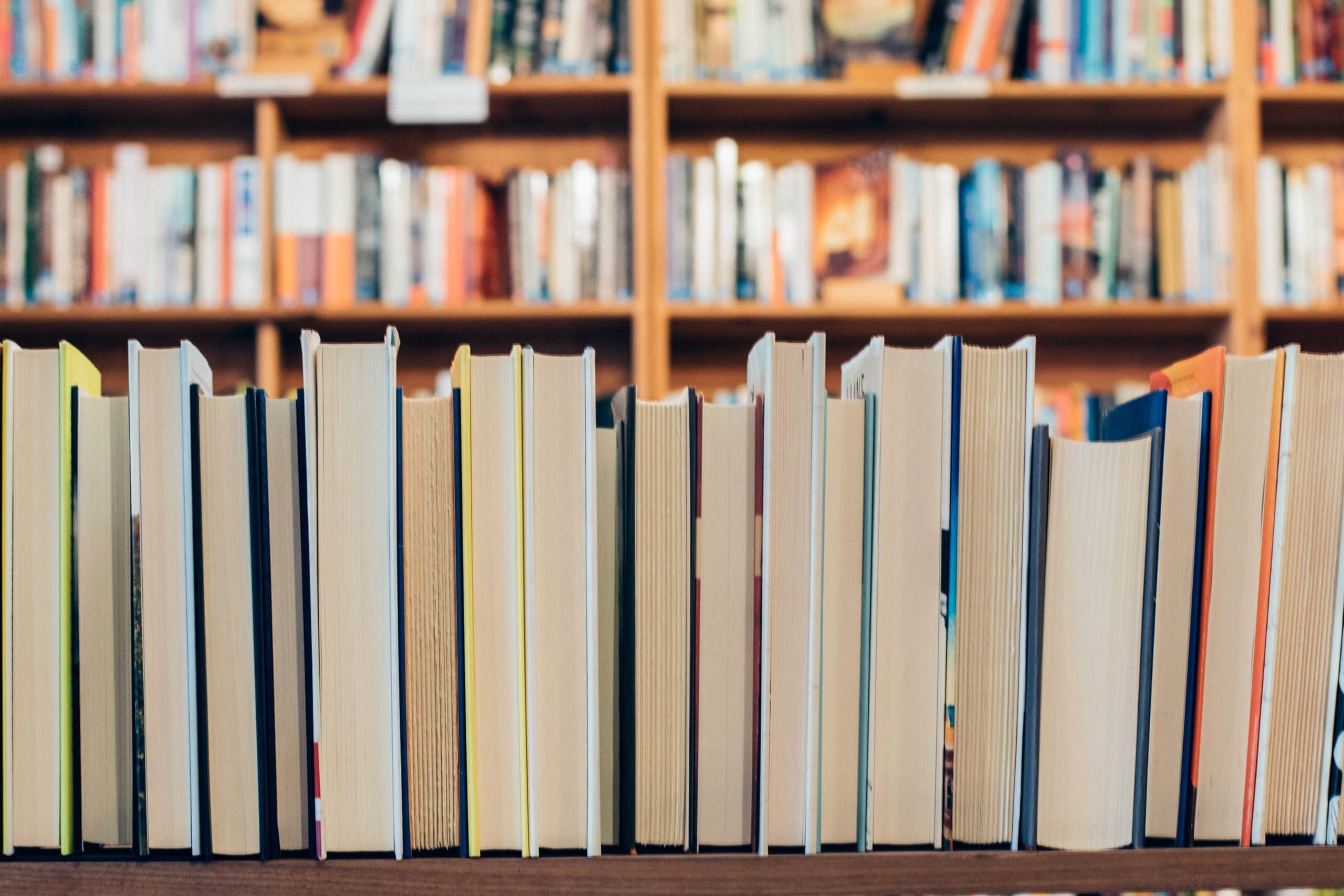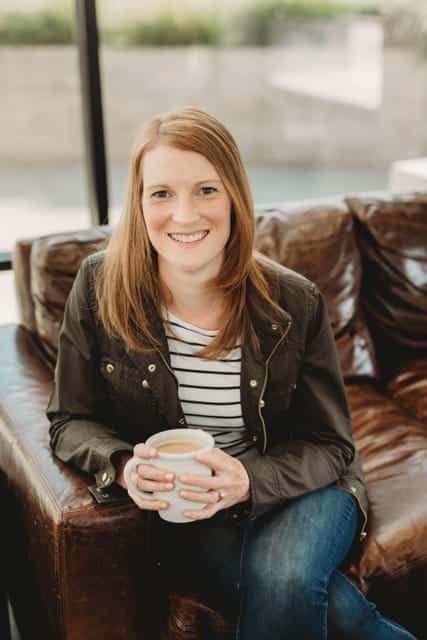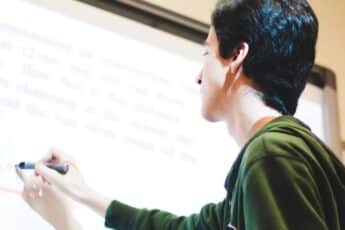Classroom libraries have been all the rage on Instagram in ELA and Social Studies classrooms the last few years.
But, really, if you teach an elective like Leadership or advise your school’s Student Council, you should consider stocking a shelf with related books specifically for those students, since those titles are much less likely to be showcased, or even present, in your school’s library.
The books included here are a great addition to your classroom library regardless of what you teach. They will help your students find their passions and build their skill sets to impact the world.
As a Student Council advisor or Leadership teacher, you can use these a couple of different ways. First of all, though, I recommend creating a classroom library with books available for check-out by students anytime and for pleasure. I have mine mixed in with my other, more social-studies-focused books, but they could also be set aside in a Leadership-specific collection.
Certainly you should make tailored recommendations to students and promote them generally throughout the year, but it’s a no-pressure thing. The key is to celebrate reading and personal growth for the joy of it.
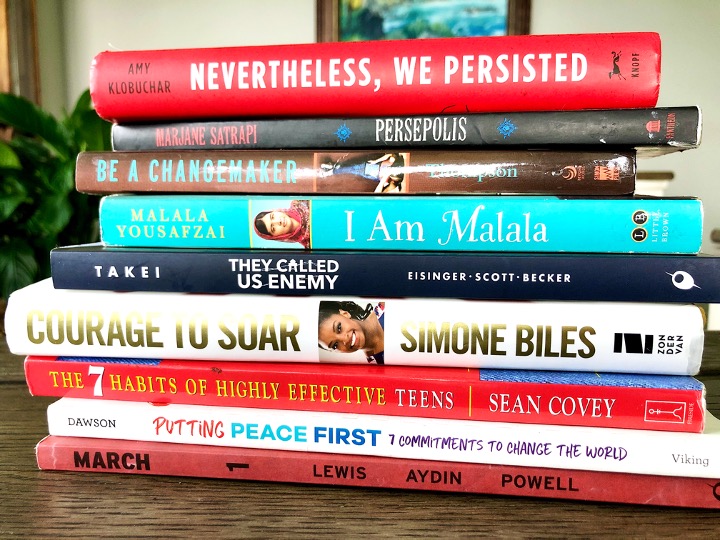
Another way to use your library is through more structured independent reading or even in a literature circle format with a few students choosing to read the same book. You can make this a component of your Student Council officers’ development or Leadership class by requiring a book as a summer reading or, perhaps, having an independent book challenge each semester. This has been an expectation for my executive officers for years and it’s worked well. It can be a great addition to your class too, just be sure that students have a say in the books they read if you go this route.
My Leadership Book Study Kit is perfect for this more structured approach. Students maintain a dialectic journal, jotting down their thoughts and brainstorming how to apply concepts to their own lives as student leaders.
These notes are perfect for sharing in their literature circle a few times throughout reading it, or in a book conference with you once they are finished. Afterwards, students create a review that you can post to a bulletin board for future students.
However you incorporate them, these 25 titles are a great place to start building your leadership-focused classroom library!
How-To Leadership Skills
These books are perfect for the student who’s already identified a desire to create change, but doesn’t know where to start or how to focus their passion.
Be a Changemaker: How to Start Something that Matters by Laurie Ann Thompson
This is the how-to guide every eager-yet-still-inexperienced changemaker needs to read. It’s written for teens, but without the cartoony clip art and “trying too hard to be cool” vibe. Each chapter starts off with a profile of a young adult doing great things before diving into neatly organized practical advice. Everything from brainstorming to connecting to the media to avoiding burnout are covered. This is a must for any middle school or high school Leadership program.
Me to We: Finding Meaning in a Material World by Craig Kielburger
This message of looking past oneself to the “we” of others is perfect for your teenager students. Craig not only shares his personal story of starting his non-profit, Free the Children, as a kid, but also takes a high-level approach to explaining this mind shift. This is a great starter book for any emerging student leader who might need some encouragement to not ignore the feeling they have in wanting to make an impact bigger than themselves.
Putting Peace First: 7 Commitments to Change the World by Eric David Dawson
This book focuses more on guiding principles rather than practical advice. Each chapter’s principle centers around one young adult activist’s story, then at the end of the chapter there are a few pages of application with reflection and moving forward questions for the reader. There are also “Take Action” challenges that are simple to do. In addition to being available for students to check out, each chapter can be framed easily into a one-day lesson.
Thank You for Coming to my TED Talk: A Teen Guide to Great Public Speaking by Chris Anderson
This one is great for diving into the specifics of one specific area of leadership skills: public speaking. And who better to learn captivating speaking from than the head of TED? With daily announcements, election speeches, and assembly hosting all part of the Student Council job, your students likely need some formal advice and tips for doing it well. This is that advice. It’s a quick read without cheesy art or scribble fonts.
We are Power: How Nonviolent Activism Changes the World by Todd Hasak-Lowet
Set up like Putting Peace First, this book uses famous historical non-violent movements as the focus for each chapter to illustrate a guiding principle about using this approach for change. This book has a middle school feel and could be a great asset if you teach middle school history as well.
Memoirs of overcoming adversity
These are a few of my favorite memoirs to recommend to students interested in lived experiences different from their own and ones for which they can independently (or with just a little nudging) identify the underlying themes and character traits of the authors. These are inspiring stories of resilience, courage, and hard work.
Born a Crime: Stories from a South African Childhood by Trevor Noah (also available in a middle grades edition)
Trevor tells of a very entertaining childhood filled with humor and mischief that is simultaneously shaped by the absurdity of apartheid South Africa and the instability of poverty. His book ends before he becomes an internationally successful comedian and moves to the United States, which is a strength, I think, because that would have distracted from his relatability.
Courage to Soar: A Body in Motion, a Life in Balance by Simone Biles
Simone, the most decorated gymnast of all time, details her roots from starting her life in foster care, to being adopted by her grandparents, to her quick rise to the top of the gymnastics world. She is open about personal struggles of losing her grandmother and balancing school and training, and she writes in a relatable, casual way your students will like.
Hey Kiddo by Jarrett J. Krosoczka
Jarrett recounts his turbulent childhood with two drug-addicted parents and the grandparents who are raising him despite their own problems. Regardless, their love allows him both space and support to develop his interest in drawing, which leads to opportunities including art school after high school. His memoir is a graphic narrative he both authored and illustrated and, despite the heavy content, is suitable for both middle and high schoolers.
I am Malala: How One Girl Stood Up for Education and Was Shot by the Taliban by Malala Yousafzai (also available in a middle grades edition)
Malala shares her harrowing story of fighting for the right of girls to be educated in her home country of Pakistan after the Taliban took control, and nearly dying from a gunshot to the head. After healing she continued her activism, for which she was awarded a Nobel Peace prize. Her story of bravery, conviction, and grace belongs in any classroom library.
A Long Way Gone: Memoirs of a Boy Solider by Ishmael Beah
Ishmael recounts his experience during the 1990s civil war in Sierra Leone where he was forced to become a child solider. After a couple of years’ terror, he and others are released to aid workers and he begins the process of reintegrating to civilian life. This is a powerful story of forgiving oneself and healing from trauma, and is best suited for high schoolers.
Positive: A Memoir by Paige Rawl
Paige shares her story of being HIV-positive her whole life and finally confiding her status to a friend in middle school one day. Suddenly, she is subject to ongoing and intense bullying from her classmates. What was previously something that she didn’t feel defined her, now made her world turn upside down. Paige really shows the meaning of resilience and how to be bigger than the circumstances around you.
The Red Bandanna: A Life. A Choice. A Legacy. by Tom Rinaldi
Not technically a memoir, instead it recounts Welles Crowther’s life and his choice to help others on September 11, 2001, after the World Trade Center towers had been hit. The people he led to safety never caught his name, but months later, stories surfaced from several survivors about a man who helped them and the red bandanna he was wearing. This is a great book about service to others and character during a moment of crisis.
Self-Improvement, Relationship Building, & Executive Functions
The “self-help” genre has come a long way since the days of stigmatized back corners of the local bookstore. The books below offer great tips for living a more impactful life without waiting for adulthood. The habits and tricks taught in these also make great stand-alone lessons.
Better Than Before: What I Learned about Making and Breaking Habits by Gretchen Rubin
This is a book I most wish had a YA version, but until that day comes if you teach high schoolers it is still worth having in your collection. Gretchen outlines all sorts of strategies for successfully starting good habits and ending bad ones. She also lays out a fascinating framework for different personality types and how to make the habits work for each.
How to Win Friends & Influence People by Dale Carnegie
It is impossible to skip over recommending this classic, despite feeling a bit trite doing so. I do not recommend the YA version, which is tailored only specifically for girls. Being adult oriented, it’s best for high schoolers, especially students who already excel at executive functioning and are focused and goal-oriented.
Ignite Your Spark: Discovering Who You are from the Inside Out by Patricia Wooster
Here is a good book to have for middle school students in need of help transiting to teenagerhood. It focuses on both being successful academically and socially, as well as how to find one’s personal passion in life. There are several anecdotes and celebrities included who offer their advice.
The 7 Habits of Highly Effective Teens by Sean Covey
Another classic I can’t not recommend. If you teach older students, the original version may work, but this YA version is tagged through 12th grade despite some cheesy clip art. These habits work as a great foundation for whole-class character lessons you could do throughout the year, too.
A Teen’s Guide to the 5 Love Languages: How to Understand Yourself and Improve All Your Relationships by Gary Chapman
This YA version of the best-selling book is a perennial hit with students fascinated by learning their “love” language, as well as those of their friends and family members. There is a free quiz and study guide to accompany this book available online.
Graphic narratives of historical events
Being graphic narratives, these books make historical events, perhaps ones otherwise unknown to your students, more accessible, especially for independent reading. They show how amid some of the worst of humanity, we can also see some of its best.
The Harlem Hellfighters by Max Brooks
The Harlem Hellfighters were the most-decorated Black regiment in World War I and recipients of the Coix de Guerre for their service alongside the French Army. Their story is one of fighting against enemies on the battlefield as well as against oppression and racism within their own country. Despite its warfront scenes, it’s marked for middle grades.
The March Trilogy by John Lewis
From the first page of Book One, which meets John Lewis on the Edmond Pettus bridge, these three books cover the key events and lesser-known details of a twenty-something John Lewis making an enormous mark on the Civil Rights Movement thanks to his laser focus, strong moral compass, and unyielding persistence. A sequel series, Run, has more recently been released to continue the story. This series is better for high schoolers due to its depiction of violence, language, and more complex details.
Persepolis: The Story of a Childhood by Marjane Satrapi
Marjane recalls her childhood during the 1980s Islamic Revolution in Iran. Being in an upper-middle class family, she is luckier than others to have access to education and Western political ideas, but her family is not insulated from the trauma and chaos of the ongoing war. This book is best suited for a high school library.
They Called Us Enemy by George Take
George recounts his personal story of the U.S. government’s decision to forcibly imprison 120,000 Japanese Americans during WWII, all while not even one was convicted of espionage or sabotage. He covers not just historical events, but also the effects on his family, particularly his relationship with his father as he tries to understand what happened in his teenage years. Being a young child during WWII, George shares a simpler plotline told from a child’s perspective that is easier for middle school students to follow than other memoirs related to the same time period.
Essay Collections
Besides having these on your classroom library shelf, these books are great for copying single essays for one-day lessons focused on certain character traits or themes, like breaking stereotypes, perseverance, or choosing kindness. You could offer students a choice among 3-5 essays to read and hold a one-time small group literature circle among those who read the same essay or hold a whole-class discussion with broad Socratic Seminar-type questions focused on the central theme.
Note: some essays in these books contain adult language and/or touch on sensitive topics. Be sure to preview them closely before putting them on your shelf for self-checkout.
Channel Kindness: Stories of Kindness and Community compiled and edited by the Born This Way Foundation
As the title says, these 50 essays focus on individual acts of kindness, big and small, that have an impact in people’s lives. This is a great book to use with your students as part of a season of giving during the winter months or for Random Acts of Kindness Day in February.
Nevertheless, We Persisted: 48 Voices of Defiance, Strength, and Courage compiled and edited by In This Together Media
This collection of diverse voices will help your students see how making an impact isn’t only for people in the right place at the right time. Nor is there one way to make an impact. Anyone can speak up.
Our Stories, Our Voices: 21 YA Authors Get Real about Injustice, Empowerment, and Growing Up Female in America compiled and edited by Amy Reed
Unlike Nevertheless, We Persisted, this collection of essays has a narrower focus, making it a book best used for pulling select essays to discuss and compare. To read it all the way through feels a little repetitive. It does, however, do a great job of illustrating how identity is best understood through the lens of intersectionality, which may resonate with your more mature and social-justice-minded high school students.
Student Voice: 100 Argument Essays by Teens on Issues that Matter to Them compiled and edited by Katherine Schulten
Compiled by the New York Times, these essays are perfect examples of the op-ed essay—short, personal, passionate, and supported by evidence. Being TikTok natives, students may need to see the power that the written word still holds. This book is organized by broad categories, including everything from sports to criminal justice.
Hopefully this list gives you more than enough titles to build out your classroom library. And be sure to grab my Leadership Book Study Kit, to easily integrate independent reading into your Student Council group or Leadership class. It’ll inspire your student leaders to not only create change, but also fill their toolboxes with the necessary skills to do so!
Included in this kit are journal pages, directions for a book talk, and a review slip to share recomendations with others.
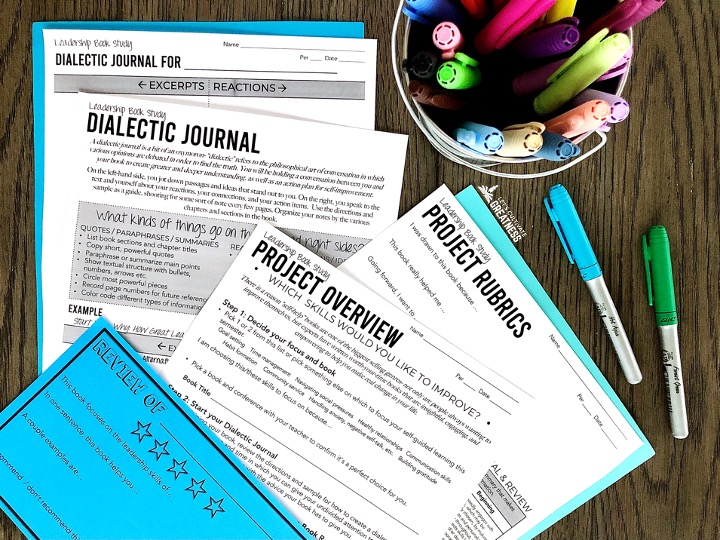
Image credit: Jessica Ruscello


